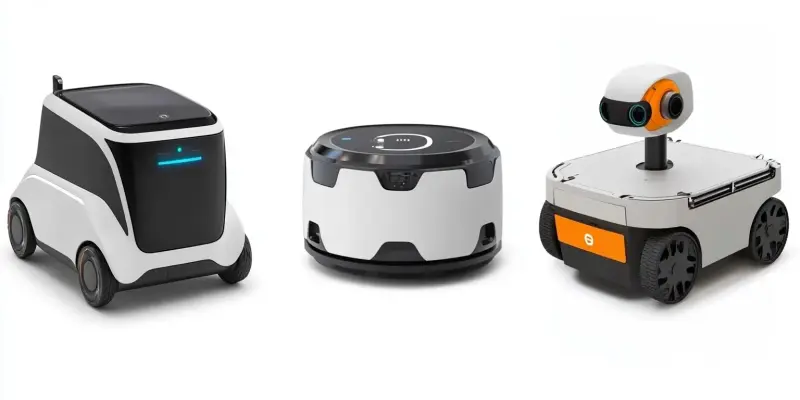Serve Robotics has taken a notable leap forward in the realm of autonomous delivery technology with the unveiling of its third-generation autonomous delivery robot. Designed to significantly enhance efficiency, functionality, and cost-effectiveness, this new bot boasts groundbreaking advancements over its predecessors. The bot’s enhancements have caught the attention of major partners, as evidenced by Uber Eats’ plans to deploy 2,000 units in 2025.
Enhanced Capacity and Navigation
Increased Carrying Capacity
One of the most notable improvements in Serve Robotics’ new bot is the 15% increase in its carrying capacity, enabling it to transport bulkier items such as four large 16-inch pizzas. This increased capacity makes the bot more versatile for various delivery scenarios, allowing businesses to handle larger and more complex orders efficiently. Not only does this elevate the robot’s functionality, but it also addresses a critical demand in the food delivery sector where timely and whole deliveries are of utmost importance.
Along with the heightened carrying ability, the bot features a newly engineered suspension system designed for a smoother delivery experience. This advanced suspension drastically reduces food spillage, ensuring that the items arrive in the same condition as when they were prepared. This enhancement is particularly beneficial for businesses looking to maintain high standards of food quality and presentation during transit. Together, these advancements maximize the bot’s operational efficiency while minimizing potential delivery mishaps.
Technological Enhancements
Serve Robotics’ third-generation bot showcases a blend of technological advancements, including Nvidia’s Jetson Orin module and Ouster’s new REV7 digital lidar. The integration of these powerful technologies significantly boosts the bot’s autonomous mobility and increases its decision-making speed. A comprehensive sensor suite upgrade further refines its ability to navigate diverse urban landscapes efficiently and effectively. One of the standout achievements is the fivefold increase in onboard computing power, enabling the robot to process vast amounts of data and make quicker decisions on the go.
With its enhanced technological capabilities, the bot can now travel at speeds twice as fast as its predecessor, reaching a top speed of over 6 mph. In addition, the bot’s range on a single charge has doubled, allowing it to remain operational for an additional six hours each day. This increased operational time means that businesses can extend their delivery hours and meet more customer demands, contributing to higher satisfaction rates. These technological enhancements make the new bot one of the most advanced autonomous delivery robots on the market.
Safety and Manufacturing Boosts
Safety Improvements
Safety has always been a critical factor in the design and operation of autonomous delivery robots, and Serve Robotics has made significant strides in this area with their latest model. The third-generation bot features improved water resistance, which ensures reliable performance even in adverse weather conditions. This makes it an ideal solution for cities and regions where weather patterns can be unpredictable and delivery reliability is paramount.
Moreover, the bot is equipped with faster emergency braking capabilities, reducing its stopping distance by an impressive 40%. This critical upgrade enhances the safety of pedestrians and other road users, making the bot safer to operate in busy urban environments. Keeping safety at the forefront, Serve’s advancements in these areas not only boost public trust in autonomous delivery systems but also pave the way for wider adoption in various markets. These improvements mark a notable progression in ensuring both the efficacy and safety of autonomous delivery technologies.
Large-Scale Deployment
Serve Robotics has made a significant breakthrough in the field of autonomous delivery technology by launching its third-generation delivery robot. This latest model is crafted to greatly improve efficiency, functionality, and cost-effectiveness, representing a substantial upgrade from its earlier versions. Among the impressive advancements, the robot now features state-of-the-art navigation systems, enhanced durability, and sophisticated AI capabilities, making it more reliable and versatile in various delivery scenarios. These innovations have resonated with key industry stakeholders, most notably Uber Eats. Eyeing the potential benefits, Uber Eats has announced an ambitious plan to roll out 2,000 units of this advanced delivery bot by 2025. This large-scale deployment underscores the confidence leading companies have in Serve Robotics’ technology and its potential to revolutionize the delivery landscape. With this new generation of autonomous delivery robots, Serve Robotics is poised to set new standards in the industry, driving forward the future of automated delivery services.

